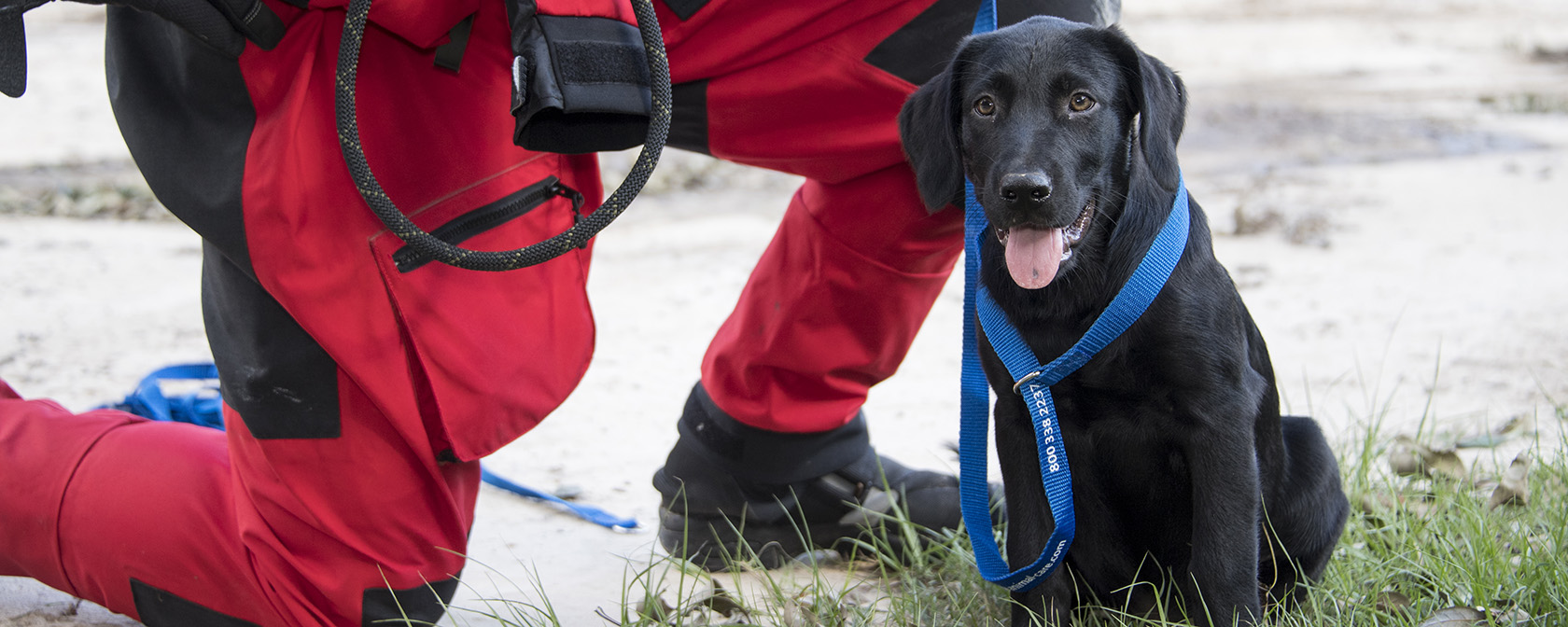By Sara Amundson and Kitty Block
In recent weeks, our organization has answered the call to help animals and people displaced by Hurricanes Helene and Milton in the United States and Hurricane John in Mexico, as well as disasters in India, Viet Nam, Nepal and Ecuador, where we have sent team members or funds to help local organizations. We admire what our colleagues have achieved in this rapid sequence of deployments, and the good they have accomplished, and we are grateful to the nearly 100,000 donors who have recently supported this relief work through the designated Emergency Animal Relief Fund.
We’re grateful to have been able to grow our disaster and emergency response capabilities to such an extent that we can now deploy in multiple situations simultaneously not just in the United States but throughout the world. This is a capacity we have prioritized for years, and it is a critical element of our service to animals and their communities. In two decades of meeting animal-related disaster needs across the globe, we have rescued and transported tens of thousands of animals to safety, provided food and supplies to countless communities and local organizations to bolster their response efforts, trained generations of rescue personnel and volunteers, integrated and developed advanced protocols for rapid assessment, resource mobilization and animal care.
Since even before our historic commitments in the aftermath of the 2004 Indian Ocean Rim tsunami and 2005’s Hurricane Katrina, we have prioritized an approach involving preparedness, pressing for policies that include animals in disaster planning, rapid response, near-term recovery efforts and long-term resilience initiatives in the communities to which we deploy. After the tsunami, we used donated funds to build a local veterinary school. In Louisiana, after Katrina, some of our recovery efforts included helping to rebuild local animal shelters, funding shelter medicine programs at local universities, as well as spay/neuter clinics. These are the kinds of animal welfare initiatives that have long-lasting consequences for communities and generations of their animals.
Some basic rules apply no matter the scope and scale of a disaster. Whatever the nature of the emergency, we work with local authorities to develop the skills, training and equipment needed to be ready when our help is requested; we make sure we can provide the resources and leadership the situation demands; we make animal rescue and care as a high priority; and—where needed—we follow up on our immediate response and rescue work with support for long-term reconstruction and related initiatives.
Being strategic and collaborative is essential in this kind of work. To deploy or send resources in response to a crisis, we need to be invited in by local authorities and organizations, so that we do not unintentionally add to the chaos in the aftermath or offer services that are not needed. We must ensure that we have the people, training, equipment and resources for that response to be effective. We could not succeed if we simply waited for disaster and emergency scenarios to come to our attention—we take steps to ensure that we are ready every day. That means committing funds to team readiness, advanced training, acquisition of essential supplies, vehicle and equipment purchases and maintenance, partnerships and other dimensions of preparedness.
When we solicit financial support during a disaster, we ask our supporters to contribute through a designated Emergency Animal Relief Fund, which sustains our Animal Rescue Team and its needs throughout the year, not simply in the moment when crisis demands their quick reaction and deployment. These funds make it possible for our rescue team members to always be ready, to recruit and train personnel and volunteers, to maintain vehicles and equipment and to cultivate non-monetary donations, such as donated goods or volunteered time, that we direct to on-the-ground partners in need of critical supplies. And they also make it possible for us to support recovery and reconstruction efforts where appropriate.
In the face of such devastation, it is essential to build lasting relationships with partners in order to transform the tragedies of disaster into recovery, reconstruction and resilience. We leverage our corporate partnerships to secure and ship donations of food and supplies. We respond to situations directly. We contribute to the repair and rebuilding of essential infrastructure. We make long-term investments in communities overwhelmed by disaster. We do our best to put our partners on a stronger footing and to enhance the prospects for better and stronger animal protection work in areas impacted by disasters.
The two decades since we responded to the Indian Ocean tsunami and Hurricane Katrina have witnessed a remarkable shift in public policy concerning animal-related disaster work, and we have been at the very heart of that transformation in the U.S. Just a year after Hurricane Katrina, President George W. Bush signed into law the Pets Evacuation and Transportation (PETS) Act, bipartisan legislation that required all state agencies seeking Federal Emergency Management Agency funds for disaster relief to have emergency response plans that addressed animal-related needs. For years, animal organizations had been trying to persuade the nation that successful disaster response necessarily had to take account of animals and the human-animal bond. After Katrina, studies showed that nearly half (44%) of the 100,000 people who didn’t evacuate refused to because they did not want to leave their pets behind; forced abandonment added considerably to the acute trauma faced by pet owners, thereby increasing their risk of long-term post-traumatic stress disorder. Over the course of the following year, we led and financed a legislative campaign that produced this historic law and the change in attitudes that followed.
Our efforts to center animals in disaster planning and preparedness continue to bear fruit. In late 2021, the U.S. Department of Agriculture announced its intention to implement long-overdue requirements for disaster preparedness planning for animals in regulated breeding, exhibit and research facilities covered by the Animal Welfare Act. In 2022, President Joe Biden signed into law the Planning for Animal Wellness (PAW) Act, which created an expert working group at the FEMA to review best practices and federal guidance on the sheltering and evacuation of pets in disaster scenarios. The law covers the needs of household pets, captive animals and service animals in all stages of emergency management, including preparedness, response and recovery.
On an international scale, our team has elevated global disaster response to one of our main priorities because, when it comes to greater inclusion of animals in disaster planning, there is so much more to be done. Not enough communities and disaster agencies have made the kinds of investments in resources and preparedness needed to prevent harm to animals and the people who love them. Time and again, we see economically disadvantaged and underserved communities hardest hit by disasters simply because the resources are already so scarce. We see people staying in harm’s way because they do not want to leave their pets behind and there are too few evacuation options inclusive of animals. So, when we’re not involved in direct response work, we do our best to encourage and support such planning and commitments. We are working toward the day when interest holders in both the public and private sectors prioritize concern for animals as an essential element of successful disaster and emergency response. That’s what building a more humane society is all about.
In the first quarter of the 21st century, we have responded to many complex disaster and emergency scenarios—including hurricanes, tsunamis, earthquakes, flooding, drought—which are only becoming more frequent and severe, as well as war. In the face of these devastating enormities, the show of solidarity around animals and the people who care for them is nothing short of awe-inspiring. Such support ensures that, for the communities still reeling in the aftermath of recent events, we can be there as long as it takes.
Sara Amundson is president of the Humane Society Legislative Fund.




